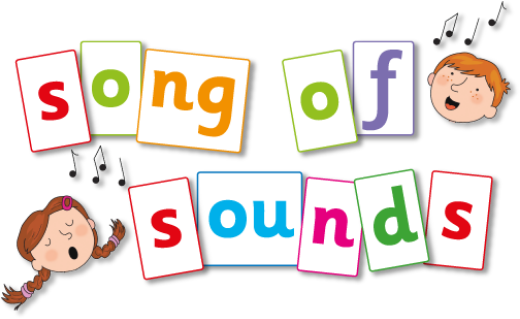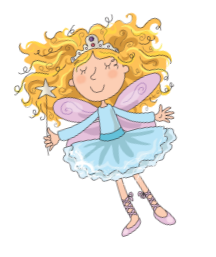The Song of Sounds subscription is a one-stop shop for all your phonic needs, and each stage contains a plethora of exciting resources to use with your class. The Teacher Handbook details how to use the resources within each daily and weekly session, but there are endless ways you can use the resources to enhance your phonics provision. Here are just a few of our ideas….
The Song
- There are 2 different audio versions of the song - one sung by an adult and one by a group of children. Both can be used in the classroom to sing-along to.
- Try playing the song whilst your children are entering the classroom.
- Use the song as the children are coming to the carpet – sing and do the actions together.
- A great game is ‘Musical get changed for PE’. Play the song whilst the children are getting changed. When you stop the music, the children freeze.
- ‘Musical tidy up’ is another great way to use the song and get the children to make your classroom sparkle.
- An interactive whiteboard version of the song is also provided. This is a great way to introduce the children to the Song of Sounds. It is very visual and a great teaching resource.
- Using the interactive whiteboard version of the song, ask the children to pick a number between 1 and 10. They should then close their eyes. You move the power point slide either forward or back the appropriate number of times and then the children open their eyes and sing that sound. Repeat lots and lots.
Flashcards
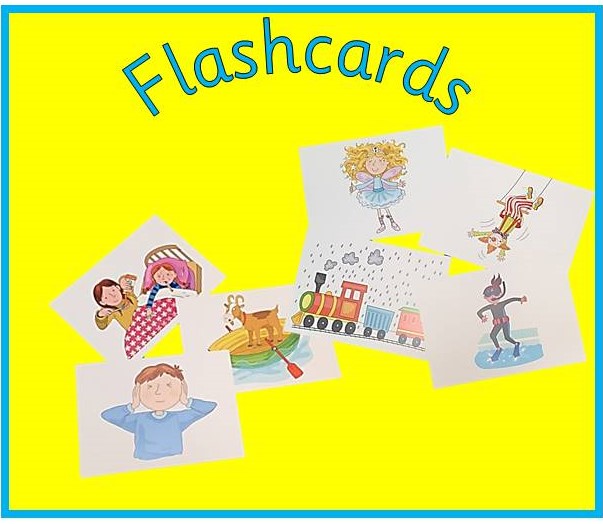
- These are used for every daily session and are a very useful resource for other games and activities.
- Use the flashcards whilst sitting on the carpet with your class. Show a card to a child and if they can say or sing the sound they can go for lunch, out to play, get ready for hometime etc.
- Play ‘Speed sounds’. Using the flashcards that have already been taught, see how quickly the children can say or sing them.
- Play ‘Stand up, sit down’ Sit the children in a circle and give each child a flash card. The teacher stands in the middle and performs one of the sound actions. Whichever child has the appropriate flashcard they must stand up. Repeat lots and if they are already standing they must then sit down. An extension is for the children to say or sing the sound once they have stood up or sat down.
- ‘Hide the flashcard’ is a great game for the children to play. Hide the cards around the classroom, under the chairs etc. The children must find a card and bring it back to the carpet area and sit down. Ask each child to tell you the sound, sing the song or perform the action on their card. This game could be a daily activity within the class.
- ‘Pass the flashcard’. This could be played in a small group but also as a whole class. Sit the children in a circle. Pick a selection of flashcards that have already been taught, 5 is a good number. Give 5 different child a card, ensure the cards are spread out around the circle. The children pass the cards around the circle whilst singing ‘pass the card around the ring, around the ring, around the ring, pass the card around the ring, what sound is it?’ The children holding the cards stand up and they must either say, sing or perform the sound. Repeat lots and lots (A tip is to perhaps start with 1 card and build up to 5 cards).
Classroom frieze
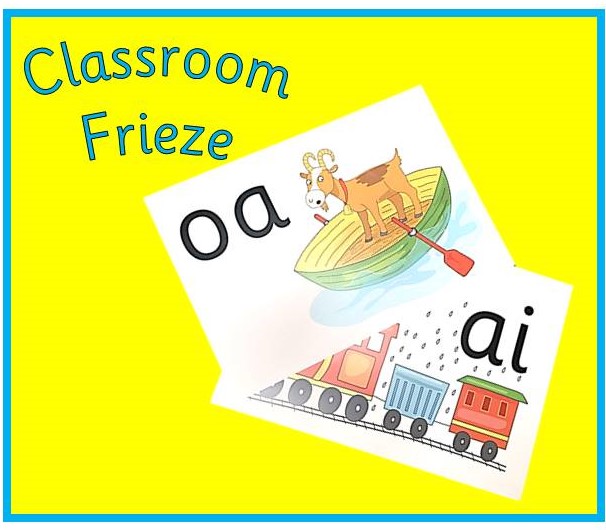
- The classroom frieze is a very visual resource and should be up in your classrooms from the start of the academic year.
- A great activity using the frieze and a fly swatter involves the children singing the song whilst you point to each letter. This allows the children to become aware of the frieze and the location of the sounds with in the classroom.
- During writing or phonic sessions, use the frieze as a point of reference for the children independently finding and writing their sounds.
Picture cards
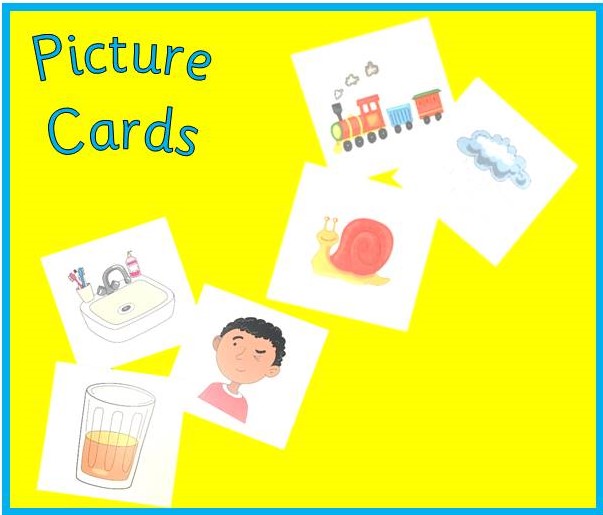
- These cards are used in the daily sessions but once they have been used they can be displayed in the classroom to create a vocabulary board.
- The picture cards are a great resource for a table writing activity. Scatter the taught cards on the table and give each child a whiteboard and a pen. Ask the children to select a picture card. They must either write the correct grapheme on their board. They can check if they are correct by turning the card over. An extension would be for the children to use their sounds to write the whole word.
Green word and sentence cards
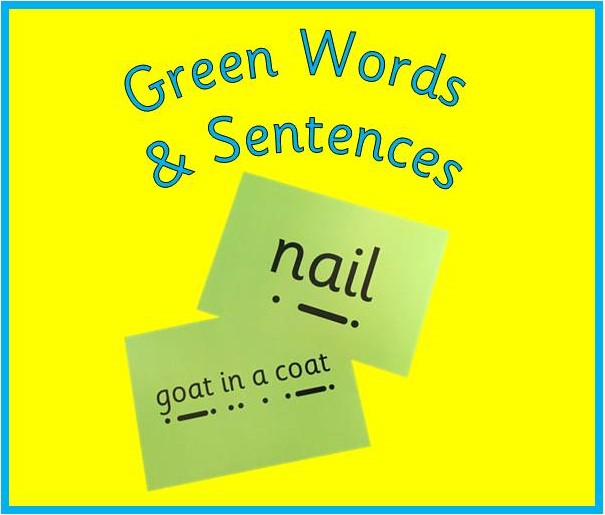
- These cards are used in the daily sessions but once they have been used they can be used for lots of different fun activities.
- ‘Pass the green card’. This could be played in a small group but also as a whole class. Sit the children in a circle. Pick a green card that has already been taught. Give one child the card. The children pass the card around the circle whilst singing ‘pass the card around the ring, around the ring, around the ring, pass the card around the ring, what sound is it?’ The child holding the card stands up and they must read the word on the card. Repeat lots and lots. If the children are coping with the activity, add in another green card.
- Play ‘Speed Reading’. Using the green cards that have already been taught, how quick can the children read the words on the card.
- Leave the green cards on a table in the classroom area for the children to independently pick-up and read. If possible provide the children with a crocodile puppet so they can read the words using croc talk.
Tricky word cards
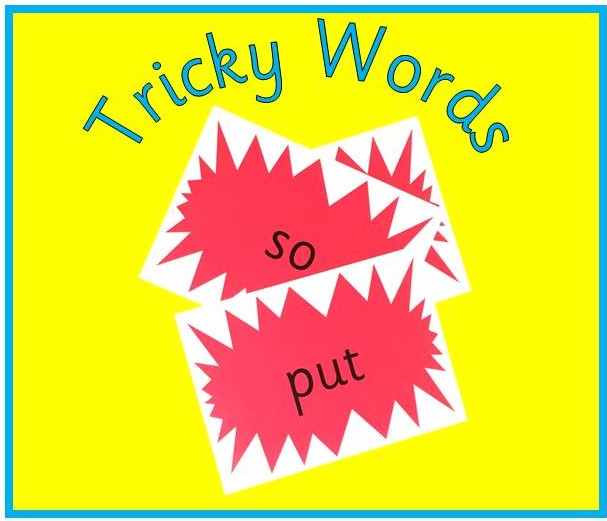
- These cards are used during the tricky word teaching weeks. Once they have been taught either make a tricky word wall or pop them on the ceiling. The children must then use them when they are writing. Once they have been taught the children must write them correctly in their work.
- Stick each taught red word on a cone. Place the cones around a large area. The children move around the area, skipping, jumping, hopping, bunny jumps. On a whistle or drum beat the children must run to a cone and stand behind it. If they can read the red word they stay in the game.
- ‘Hide the tricky word card’ is a great game for the children to play. Hide the cards around the classroom area, under the chairs etc. The children must find a tricky word card and bring it back to the carpet area and sit down. Ask each child to read or spell their red tricky word.
- Using a spinner or a homemade dice. Put 5 numbers and 1 picture of a treat. Place the red tricky cards in a bag or face down on the table. Give each child a whiteboard and a pen. One child selects a card, another child spins the spinner or rolls the dice. If it lands on a number they must write the tricky word that number of times on their whiteboards. If it lands on the treat, give your wonderful children a sneaky treat. Repeat.
Phoneme finders
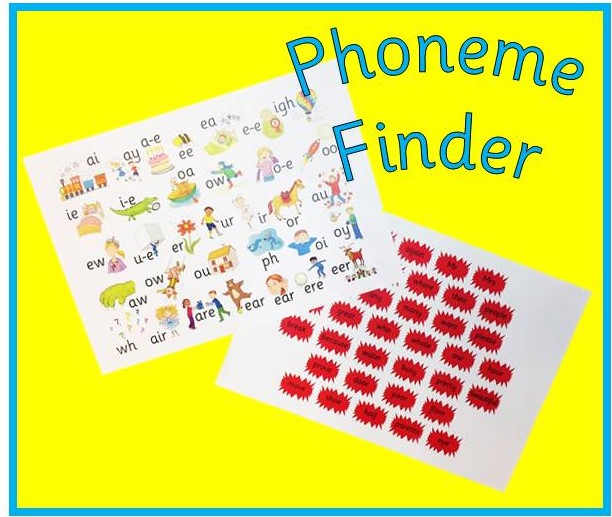
- These are an amazing resource which should be used to support your children with their writing. They can also be used for carpet or small group activities.
- Organise your children into pairs and give each pair a phoneme finder and a lolly stick. One child uses the lolly stick to point to a phoneme, the other child must either say the sound or perform the action. Repeat lots of times.
- Pre-prepare a phoneme finder with no graphemes on (blank out the graphemes on the phoneme finder, photocopy the phoneme finder and laminate. Ask the children to complete the phoneme finder by writing on the correct grapheme.
- There is also a GIANT copy of the phoneme finder for you to use on your IWB. This is a great resource for a splat game. Pick 2 children at a time. Give each child a fly swatter. You either sing a sound form the song or perform an action. The children must identify the sound and splat the correct sound on the GIANT phoneme finder. Repeat lots and lots.
Phoneme stars
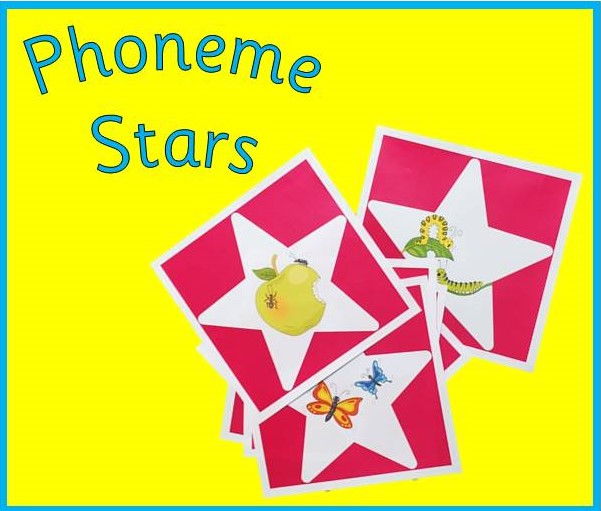
- These are a fantastic resource that can be used for lots of different activities. They are large and durable and great fun.
- Play ‘Cross The River’. Place a selection of stars across a blue mat or carpet area. Initially use the sounds that have already been taught. Each child takes it in turn to jump on each star card and either say, sing or perform the action that corresponds with that sound. If correct they jump onto the next star card. If in correct they must go to the back of the line and try again. The object is to cross the river by jumping on each star card.
- Scatter the star cards in a large outside area, such as the field. Stand the children in a long line. Spots are great for organising the children so if possible stand each child on a spot. On a whistle or sound the children must run and select a star card and bring it back to their spot. The children must either say, sing or perform the action of the sound that corresponds with their card. Repeat lots of times.
- Play ‘Giant Pelmanism’ You will need to make a set of grapheme cards to use with the phoneme cards. Scatter the phoneme cards on one side of the carpet area. Place the grapheme cards face down on the opposite side. The children take it in turns to pick a star card and a grapheme card. If they match they keep them but if they don’t match they pop them back. The child who collects the most cards wins the game.
Digital Resources
- In the 'Lessons' section of the subscription package are all the digital resources you need to accompany every daily and weekly session. They are cleverly organised into stages, then terms, then weeks so it is easy to navigate for teachers to access resources quickly!
- There is a PowerPoint presentation to accompany weekly teaching session. They are interactive and good fun.
- Resources for any games mentioned in the handbook can be found here in the appropriate week.
Modified Resources
All of Song of Sounds teaching approaches, materials and resources have been developed so that they are age-appropriate and can be used with the majority of pupils. Practitioners may of course make adjustments to the resources or teaching approaches to accommodate the learning needs of children with special educational needs and/or disabilities where required. For example, it may be appropriate to change the font, size or paper colour of the standard materials or it may be appropriate to make use of alternative resources such as magnetic whiteboards with magnetic letters or phoneme frames. If you need any support in modifying resources or any particular advice with regards adapting teaching approaches and materials, please contact us by email at hello@songofsounds.co.uk.
